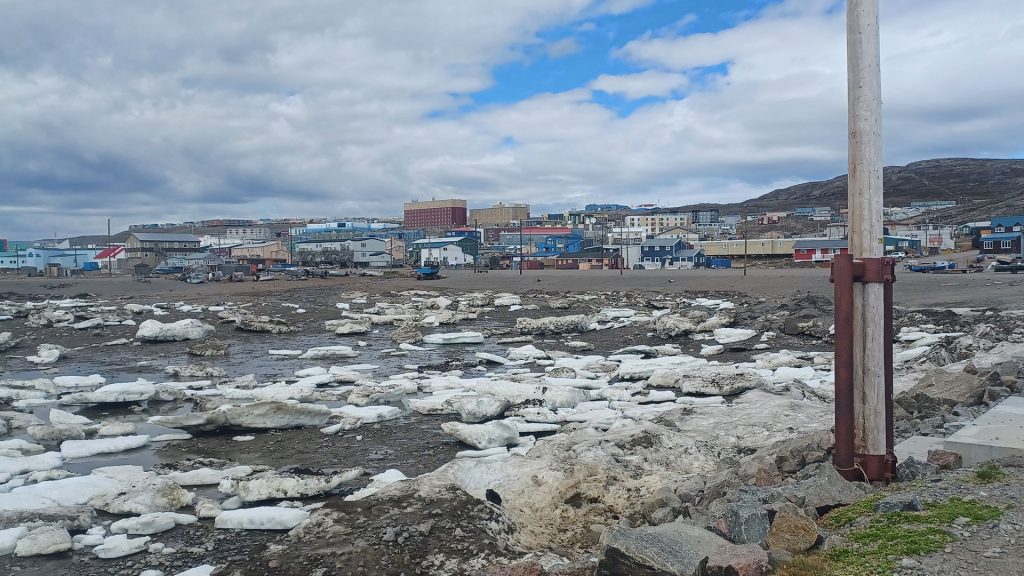
A shot of Iqaluit taken from the breakwater. The establishment of a Nunavut Land Use Plan is required as stipulated under the Nunavut Agreement signed 30 years ago. Photo: Trevor Wright/APTN.
A territory-wide land use plan for Nunavut, set to cover one-fifth of Canada’s land mass, is one step closer to becoming a reality.
On June 20, the Nunavut Planning Commission, the organization responsible for the Nunavut Land Use Plan submitted its recommended plan to the federal and territorial governments, as well as Nunavut Tunngavik Incorporated, Nunavut’s lands claim organization, for approval.
The establishment of a Nunavut Land Use Plan is required as stipulated under the Nunavut Agreement signed in May 1993. The plan is a culmination of more than 15 years of work with community consultations, public hearings, written submissions and information sessions involving all of Nunavut’s 25 communities.
“This plan would not be possible without the active and informed participation of all our planning partners,” said Jonathan Savoy, the director of policy and planning under the Nunavut Planning Commission.
“The Commission has been the beneficiary of the expertise of Inuit traditional knowledge, of best-available scientific research, along with views of government, Inuit organizations, transboundary Indigenous peoples, industry and non-governmental groups.”
The plan sets out requirements on how Nunavut’s 3.3 million square kilometers of land would be used, split into mixed-use, conditional-use and limited-use areas.
Mixed-use is generally not as restrictive as the other designations with traditional, research, economic, conservation and transportation projects being possible in these areas with certain restrictions being in place depending on the region.
Limited-use areas have a significant amount of restrictions on land use, such as oil, mineral and gas exploration as well as projects over 15 metres in height.
Conditional use areas include season prohibition on specific land uses as well as setback requirements around important features, examples of this can include restrictions on projects during polar bear denning season or restricted access to migratory bird sites.
Joanna Quassa, the territorial minister of environment, said she’s reviewing the recommended plan alongside the two other signatories of it.
The review of the plan, according to the Nunavut government will be taking place over the next several months.
Key issues deliberated from the 2021 Nunavut Land Use Plan include caribou habitats, Inuit-owned lands, land use designations, roads, marine shipping and maintaining existing rights.
Sharon Ehaloak, executive director for the Nunavut Planning Commission, stressed that the Nunavut Land Use Plan is subject to change as it’s monitored, reviewed and amended to reflect changing circumstances and needs.
“Balancing diverse and competing interests has been the overarching challenge,” said Ehaloak.
“The really hard work lies ahead, and it’s crucial everyone understands the Plan is a living document.”









